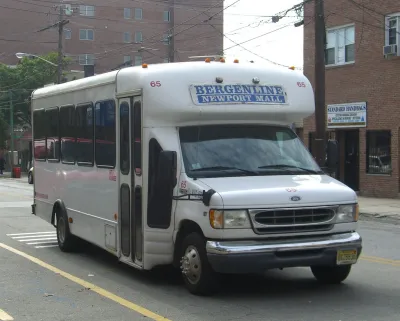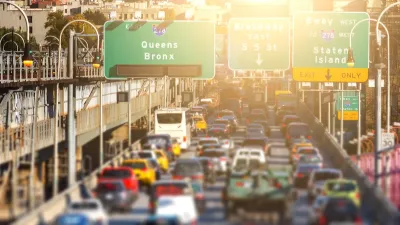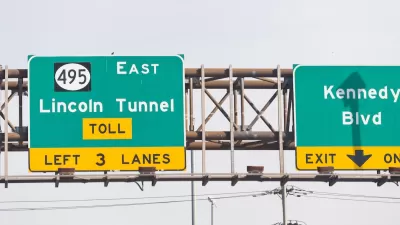A semi-formal transportation system has served New Yorkers for half a century, but complex regulations prevent most drivers from operating legally.

An unofficial transportation system has been a lifeline for thousands of New Yorkers, but increasing operating costs and regulatory hurdles put the network of ‘dollar vans’ in jeopardy.
Andrés Pacheco-Girón interviews riders and operators for a piece for Feet in 2 Worlds, explaining that the system grew out of largely immigrant communities’ experience with informal transit systems in other countries. “Following the New Yorker tradition of naming things after their price — like dollar pizza slices, or quarter waters — dollar vans became part of the fabric of the city.”
The commuter vans started operating in the 1970s and have proliferated since. They now charge varying rates based on routes and locations, and offer efficiency often unmatched by existing MTA lines.
But they operate in a legal grey area; hailing a dollar van on the street is technically illegal, and “Drivers also face challenges meeting the current requirements set by the city Taxi Limousine Commission, or TLC. Requirements include regular TLC inspections and insurance costs that can go as high as 50,000 dollars.” As of October 2024, there were 35 licensed commuter vans in the city, but many more can be seen operating on city streets.
Advocates like the Commuter Van Association of New York want to see the city reduce financial and regulatory burdens. Meanwhile, a commuter van startup is trying to modernize the industry with electric vehicles, which could lower operating costs.
FULL STORY: How NYC Dollar Vans Are Adapting for the Future

Alabama: Trump Terminates Settlements for Black Communities Harmed By Raw Sewage
Trump deemed the landmark civil rights agreement “illegal DEI and environmental justice policy.”

Study: Maui’s Plan to Convert Vacation Rentals to Long-Term Housing Could Cause Nearly $1 Billion Economic Loss
The plan would reduce visitor accommodation by 25% resulting in 1,900 jobs lost.

Planetizen Federal Action Tracker
A weekly monitor of how Trump’s orders and actions are impacting planners and planning in America.

Waymo Gets Permission to Map SF’s Market Street
If allowed to operate on the traffic-restricted street, Waymo’s autonomous taxis would have a leg up over ride-hailing competitors — and counter the city’s efforts to grow bike and pedestrian on the thoroughfare.

Parklet Symposium Highlights the Success of Shared Spaces
Parklets got a boost during the Covid-19 pandemic, when the concept was translated to outdoor dining programs that offered restaurants a lifeline during the shutdown.

Federal Homelessness Agency Places Entire Staff on Leave
The U.S. Interagency Council on Homelessness is the only federal agency dedicated to preventing and ending homelessness.
Urban Design for Planners 1: Software Tools
This six-course series explores essential urban design concepts using open source software and equips planners with the tools they need to participate fully in the urban design process.
Planning for Universal Design
Learn the tools for implementing Universal Design in planning regulations.
Caltrans
Smith Gee Studio
Institute for Housing and Urban Development Studies (IHS)
City of Grandview
Harvard GSD Executive Education
Toledo-Lucas County Plan Commissions
Salt Lake City
NYU Wagner Graduate School of Public Service





























